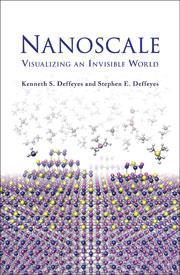Wendy Pitt reviews this coffee-table book
Nanoscale: visualizing an invisible world
Kenneth S. Deffeyes and Stephen E. Deffeyes
Cambridge, MA: MIT 2009 | Pp144 | £14.95 | ISBN 978 0 26 201283 6
Reviewed by Wendy Pitt

There has been an explosion of research and information on all things nanosized. This US book, with its American spellings, does not sit alongside more academic reference texts on the subject but is a coffee-table book intended for recreational reading. This is not to say that the text lacks rigour, though in the introduction I would have liked to have seen stated more accurately that elements numbered 1 to 92 are those that occur in Nature and that there are actually 115 known elements.
At the front of the book a useful timeline of the major developments linked to our visualisation of structures at the atomic level helps to put into perspective our current awareness of the nanoscale. The 50 subjects covered have been chosen for their interest value. The structures selected range from the simple, eg air, ice and water, through the more complex, such as α-helix and β-sheet, hemoglobin (sic) and chlorophyll, to those that underpin technologically important devices like supercapacitors, fuel cells and flash memory hardware. Some topics are accompanied by an interesting anecdote, some by an amazingly beautiful illustration, and often they have both.
Each subject is clearly explained so that readers with only limited scientific knowledge can enjoy the content. There is no space for great detail and this is not the intention, but sixthform students studying the sciences would still learn much from the information provided. The attractive illustrations are based on data from x-ray diffraction experiments and are intended to help the reader to visualise what cannot be seen with the human eye.
Although its title is unlikely to attract the masses, this is a book which anyone can pick up, dip into and gain from. If you are looking for a tour through the nanoscale world, this attractive and captivating read is a good starting point.






No comments yet